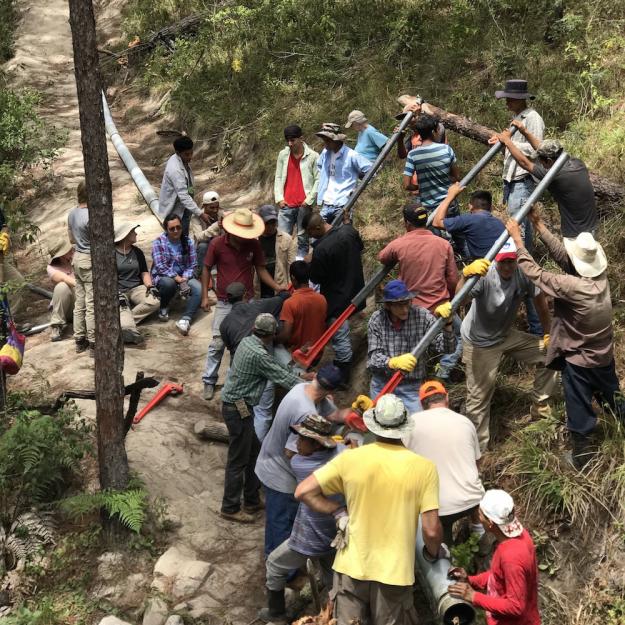Water is all around us and within us. It covers 71 percent of the earth's surface. More than 60 percent of our bodies is made up of water. It is essential to life, and access to clean water is a human right.
We mostly notice water when it's not there, or when it’s not safe to drink. When droughts lead to wildfires, or if a team manager fails to load the cooler full of water for a game on a hot day, water gets our attention. We need it to live, and its absence can quickly become a crisis.
The United Nations has prioritized clean water among its 17 sustainable development goals, which aim to end all forms of poverty, fight inequalities and tackle climate change. Discover more about the need for clean water around the world here. The United Nations report linked here and in the student resource provides solid data about global water concerns as well as goals for proposed solutions.
Disturbing photos and video about water-borne diseases also is plentiful online. While these provide important perspective, it's essential to emphasize the common need – or thirst – that all people have for water. Personalizing this or most any human rights issue leads to more effective learning.
Solidarity is a key theme of Catholic Social Teaching. Activities that enhance a sense of connection with people who lack access to safe water can make a lasting impression and make students thirsty to learn more. Knowing your students, decide what will work for them. Use the reality that data provides to temper any silliness that might emerge.
1. Ask for volunteers for an eating experiment (consult students' food allergy information to avoid problems). Provide popcorn, pretzels, plain tortilla chips or dry toast. Emphasize that this is not a contest to see how much or how fast they can eat. If students ask for something to drink, ignore them at first. If they ask again or reach for a water bottle, tell them that’s not allowed in this activity.
Explain:
- Sometimes there's just no water to be had. Around the world, droughts and other natural disasters can dry up or destroy water supplies. In other cases, the water supply can't keep up with human demand. Sometimes people use water for other reasons and fail to prioritize drinking.
- Our response is to turn to a tap or open a bottle (provide volunteers with water at this point). Many people don't have that option. Humans can survive only about four days without drinking water.
2. Ask for five volunteers. Provide five clear glasses, three filled with tap water. In the remaining two, stir in one drop each of red, yellow and blue food coloring into 12 ounces of tap water, then add a small amount of orange juice to cloud it (try a pulpier juice). Randomly count off students from one to five, then give clear water to odd-numbered students and dirty-looking water to even-numbered students. Invite them to drink up.
Explain:
- Most people know better than to drink dirty water, but many people have no choice. Somewhere between 40 and 50 percent of people lack access to safe drinking water.
- This water just has a little food coloring and juice in it (invite volunteers to drink from their glasses at this point). Many people live where their water source is too close to sources of human or animal waste. Water can be contaminated by many things, including lead in the pipes that brings it to people. And sometimes the things we can’t see in water is as dangerous as the debris we can see.
- This affects people in less random ways than what we just saw here. People living with contaminated water supplies most often live in poverty and in developing countries.
In small groups or as a class, discuss:
- How does it feel to not have safe water to drink? Have you ever gone more than a day without drinking something?
- How was it difficult to watch your classmates struggle in this activity?
- How might this affect your outlook on people you don’t know who are sick or dying because they lack access to safe drinking water
Jesus, you taught us that whenever we give drink to people who are thirsty, we are helping you.
Open our eyes and hearts to the needs of our sisters and brothers around us.
May we might not only recognize you in the people we encounter, but share with them your compassion through our loving actions and sacrifices.
Rain down your love on your people.
Amen.
Please give us your feedback! Fill out a quick survey about this lesson and how we can serve you better. Remember that its title is "Sisters' efforts bring clean water to people"
Tell us what you think about this resource, or give us ideas for other resources you'd like to see, by contacting us at education@globalsistersreport.org
